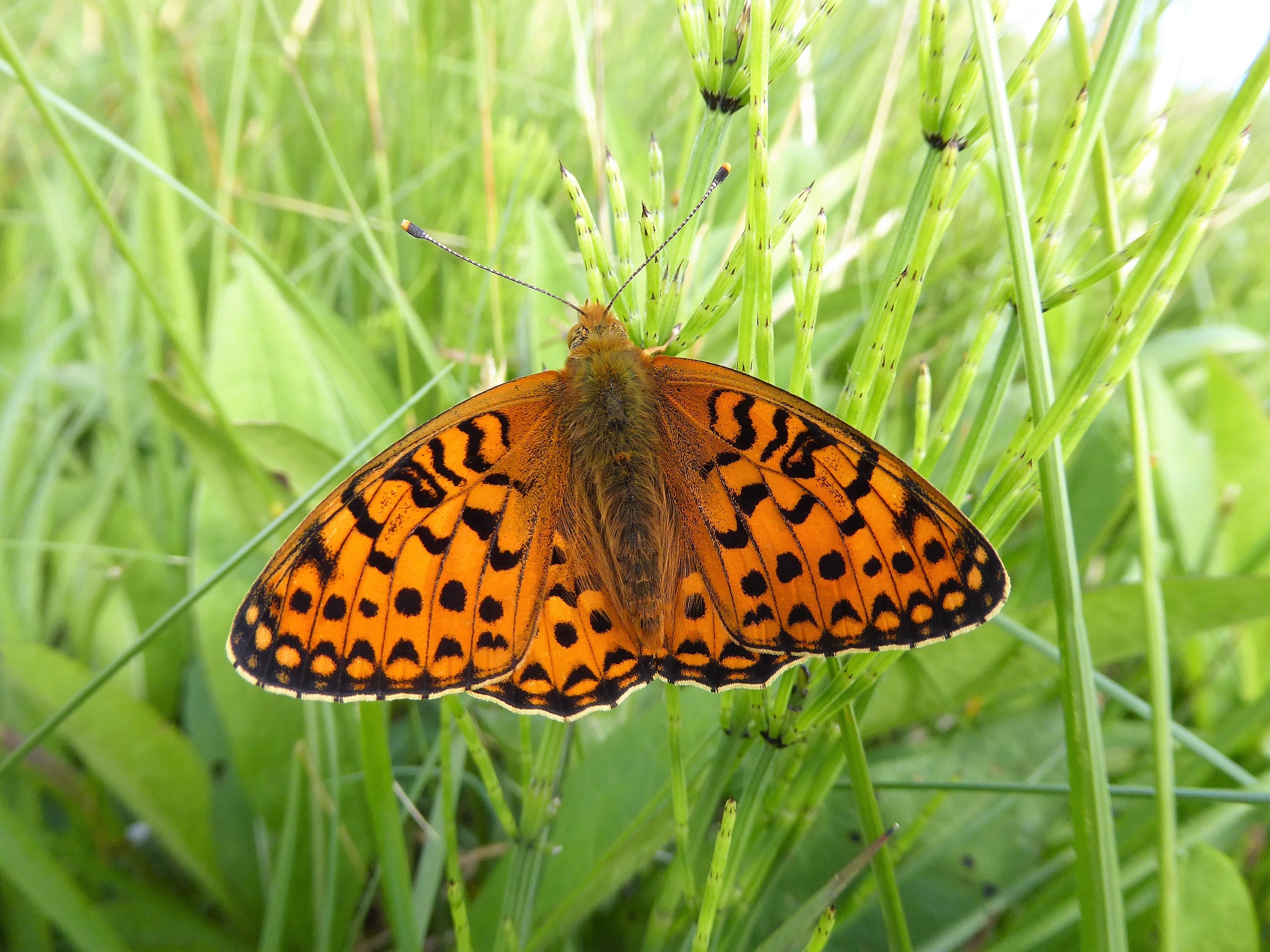
On the morning of June 22nd 2018 this lovely male Dark Green Fritillary emerged from its chrysalis low down in the vegetation on Lullybeg’s Crabtree Reserve. The butterfly is named for the green suffusion on the underside of the hind-wing. This stunning butterfly is a very powerful flyer, even in areas exposed to strong winds. Unfortunately, it is extremely difficult to approach, especially in hot weather.
The status of the Dark Green Fritillary on the Red List of Irish Butterflies 2010 is vulnerable because of a population reduction that is projected or suspected to be met in the future (up to a maximum of 100 years) based on a decline in the area of occupancy, extent of occurrence and or habitat quality. The key threats are loss of coastal habitats to erosion and golf links and a reduction in quality of remaining habitats which are suffering from the encroachment of invasive species, because these areas are no longer grazed and are left undisturbed. The encroachment of scrub on limestone, heaths and bogs is a threat to it on these habitats, as is tree planting (usually of conifers) on cutaway and cutover bogs. Destruction of limestone pavement and high quality calcareous grassland are sinister threats to this dynamic and handsome butterfly.
The species was formerly common on the cutover bog in Lullybeg. Sadly, about ten years ago it became very scarce and almost disappeared from the Lullybeg area. Steps were taken to make the habitat suitable for this magnificent species. Common Dog-violet is the main larval host-plant. The plant was largely absent from the open grassland on the reserve and the violets that exist on the reserve had become shaded by developing scrub and woodland. Heavy shade means that the violets are unsuitable for the larva. To create conditions suitable for the species, violets were planted in clumps on the open grassland. Invasive scrub with violets growing underneath was cut back manually or removed with Bord na Móna’s assistance using heavy machinery. This brought the violets back into the light. The grasses returned which provides cover and basking areas for the larva. The well developed woodland areas with violets within them were left undisturbed as this habitat is used for breeding by the Silver-washed Fritillary butterfly. The Silver-washed Fritillary also uses Common Dog-violet as the larval host-plant but its larva requires some shade for it to develop. This approach highlights the need to manage a site sensitively; actions taken to benefit a species should not damage or remove habitat for another, unless an urgent priority exists in favour of a highly endangered species. Retention and maintenance of a range of habitats is best practice especially when a large site is available for nature conservation.
The next step was to reintroduce the butterfly. A small number of adult butterflies were obtained from a large population and these were released into the habitat in 2016. Breeding was suspected in June 2017 when a female was observed on a patch of violets.
This deep orange butterfly perched on fresh green vegetation is a glorious sight on a sunny June morning, and it is heartening to see its return. Hard toil is rewarded!

